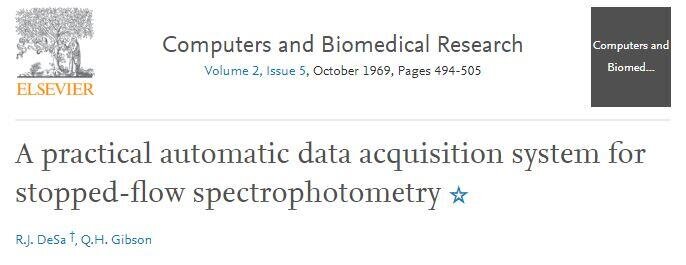What Does Uv/vis/nir Do?
Table of ContentsWhat Does Uv/vis Do?Some Known Questions About Uv/vis.Fascination About Circularly Polarized LuminescenceNot known Details About Circularly Polarized Luminescence The Spectrophotometers Diaries

Spectrophotometry is a tool that hinges on the quantitative analysis of molecules depending on how much light is absorbed by colored compounds.
Uv/vis/nir Things To Know Before You Get This
A spectrophotometer is commonly used for the measurement of transmittance or reflectance of services, transparent or opaque solids, such as refined glass, or gases. Numerous biochemicals are colored, as in, they absorb visible light and for that reason can be determined by colorimetric procedures, even colorless biochemicals can frequently be converted to colored compounds ideal for chromogenic color-forming reactions to yield substances appropriate for colorimetric analysis.: 65 Nevertheless, they can likewise be developed to determine the diffusivity on any of the noted light varieties that normally cover around 2002500 nm using different controls and calibrations.
An example of an experiment in which spectrophotometry is used is the determination of the equilibrium constant of an option. A particular chemical reaction within a service might occur in a forward and reverse instructions, where reactants form items and products break down into reactants. At some point, this chemical reaction will reach a point of balance called a stability point.
Uv/vis Fundamentals Explained
The quantity of light that travels through the option is a sign of the concentration of specific chemicals that do not enable light to pass through. The absorption of light is because of the interaction of light with the electronic and vibrational modes of particles. Each kind of molecule has a specific set of energy levels associated with the makeup of its chemical bonds and nuclei and hence will take in light of specific wavelengths, or energies, leading to distinct spectral properties.
They are commonly used in lots of industries consisting of semiconductors, laser and optical manufacturing, printing and forensic assessment, as well as in laboratories for the research study of chemical compounds. Spectrophotometry is frequently utilized in measurements of enzyme activities, determinations of protein concentrations, decisions of enzymatic kinetic constants, and measurements of ligand binding reactions.: 65 Eventually, a spectrophotometer is able to identify, depending on the control or calibration, what compounds are present in a target and precisely how much through computations of observed wavelengths.
Developed by Arnold O. Beckman in 1940 [], the spectrophotometer was created with the help of his colleagues at his company National Technical Laboratories established in 1935 which would become Beckman Instrument Business and ultimately Beckman Coulter. This would come as an option to the formerly created spectrophotometers which were not able to absorb the ultraviolet correctly.
Some Ideas on Circularly Polarized Luminescence You Need To Know
It would be found that this did not offer satisfactory results, therefore in Model B, there was a shift from a glass to a quartz prism which enabled much better absorbance results - UV/Vis/NIR (http://connect.releasewire.com/company/olis-clarity-343997.htm). From there, Model C was born with a modification to the wavelength resolution which ended up having three units of it produced
It irradiates the sample with polychromatic light which the sample soaks up depending on its properties. Then it is transferred back by grating the photodiode variety which identifies the wavelength region of the spectrum. Given that then, the creation and implementation of spectrophotometry gadgets has increased tremendously and has actually become one of the most ingenious instruments of our time.

All about Circularly Polarized Luminescence
The grating can either be movable or fixed.
In such systems, the grating is repaired and the strength of each wavelength of light is measured by a various detector in the range. When making transmission measurements, the spectrophotometer quantitatively compares the portion of light that passes through a referral option and a test service, then digitally compares the strengths of the 2 signals and calculates the portion of transmission of the sample compared to the referral standard.
